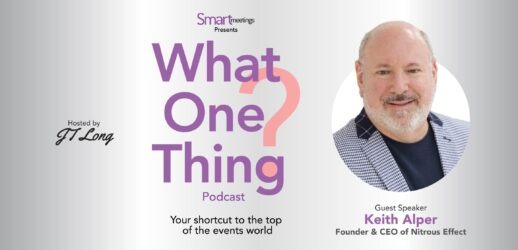A practice to help planners cope, focus and stay calm
In the whirlwind of modern life, it’s not unusual to feel like you’re operating in an anxiety-ridden fog: multitasking, haphazardly knocking items off your to-do list and fretting about the past and what’s to come.
That’s why we can all use a little mindfulness in our lives. It’s been touted as meditation, the new caffeine, a new religion and a new spirituality. There is nothing inherently new about the practice, but it is often misunderstood.
What is Mindfulness?
First, let’s debunk the myths of mindfulness: It is not about going into a meditative trance or falling asleep. In fact, it is the opposite: being aware of what is happening in our minds, in our bodies and in the world around us.
Mindfulness is a way of being. It’s about being present and alert in the moment. It’s about seeing things as they are right here, right now, on purpose and without judgment. The goal is to approach situations and challenges with openness and curiosity, enabling us to appreciate the underlying purpose and meaning of our experiences.
A benefit of mindfulness is that it is portable and flexible. You can do it while stuck in traffic, before a big meeting or in a busy airport (no one will notice, trust me). It does not require big chunks of time; even one-minute microbreaks can relieve tension and help regain focus.
Getting Started
Mindfulness is like a muscle that needs to be worked; the more we practice, the better we are able to recognize negative or wandering thoughts, sources of stress and how the body responds to stress. We do this by taking a purposeful pause.
When faced with a stressful situation, notice what goes on in your body. Hit the pause button, take some deep breaths and respond thoughtfully rather than impulsively. Think of mindfulness as your coping, calming and resiliency tool.
Many people—especially beginning meditators—get frustrated and judge themselves because they have difficulty keeping thoughts from intruding during their practice. That’s to be expected: The brain’s job is to be always thinking. The purpose of mindfulness is to make you aware of your thoughts so that you are better able to keep them from getting chaotic and disruptive. When you notice your mind wandering, simply refocus on your breathing.
Mindfulness breaks train the brain and recharge the mind, and can include body scanning (mentally “checking in” from head to toe—a practice that can be done sitting, standing or laying down), breathing exercises, yoga, walking and lovingkindness meditations (reflections of compassion, kindness and gratitude).
Mindfulness brain breaks during meetings and conferences are attention training to enhance alertness and concentration, enabling participants to focus and retain information. There is also awareness training, which can help reduce stress and anxiety in everyday work scenarios to better focus and perform in the moment.
Make you the priority. Practice mindfulness now, not Friday, not when your event ends and not after deadlines. Mindfulness is a life tool that, with practice, is readily accessible to you anytime, anyplace.
After all, you’re the one who has put on a fun and successful event. Shouldn’t you take a moment to sit back and enjoy it?
6 Tips to Re-energize, Refocus and De-stress
1. Slow down and find time to think, reflect, create, be silent and just be—as you define it.
2. Avoid negativity by practicing the three P’s (positivity, possibilities, peace), and the three W’s (ask yourself what went well today).
3. Create a quiet space where busyness stops. This could be a visual image, a sound or a physical place to practice mindfulness.
4. Be a serial monotasker. Multitaskers make twice as many mistakes when parallel processing compared to performing one task.
5. Disconnect from technology to reconnect with yourself, your colleagues and your surroundings.
6. Try an app (e.g., Calm, Happify, Headspace, Whil, The Mindfulness App, Yoga Studio, Pocket Yoga, Daily Yoga, 5-Minute Yoga, etc.). X-bytes® offers yoga and mindfulness video micro-breaks for conferences and workplaces.
Kim Bercovitz, Ph.D. is president and chief exercise officer of Exercise Bytes. She authors the blog Sitting is the New Smoking. Dr. Kim can be reached at [email protected], 1-855-8xbytes and x-bytes.com.




